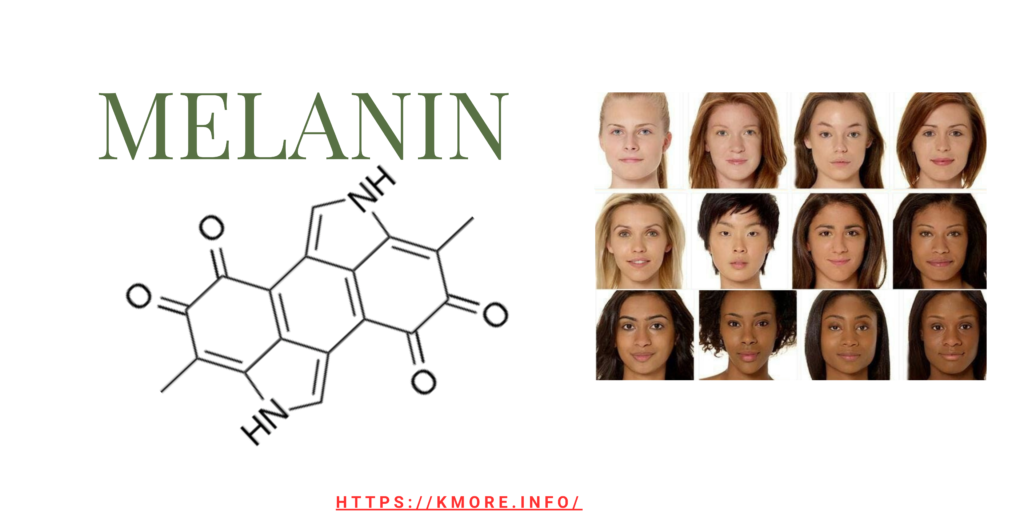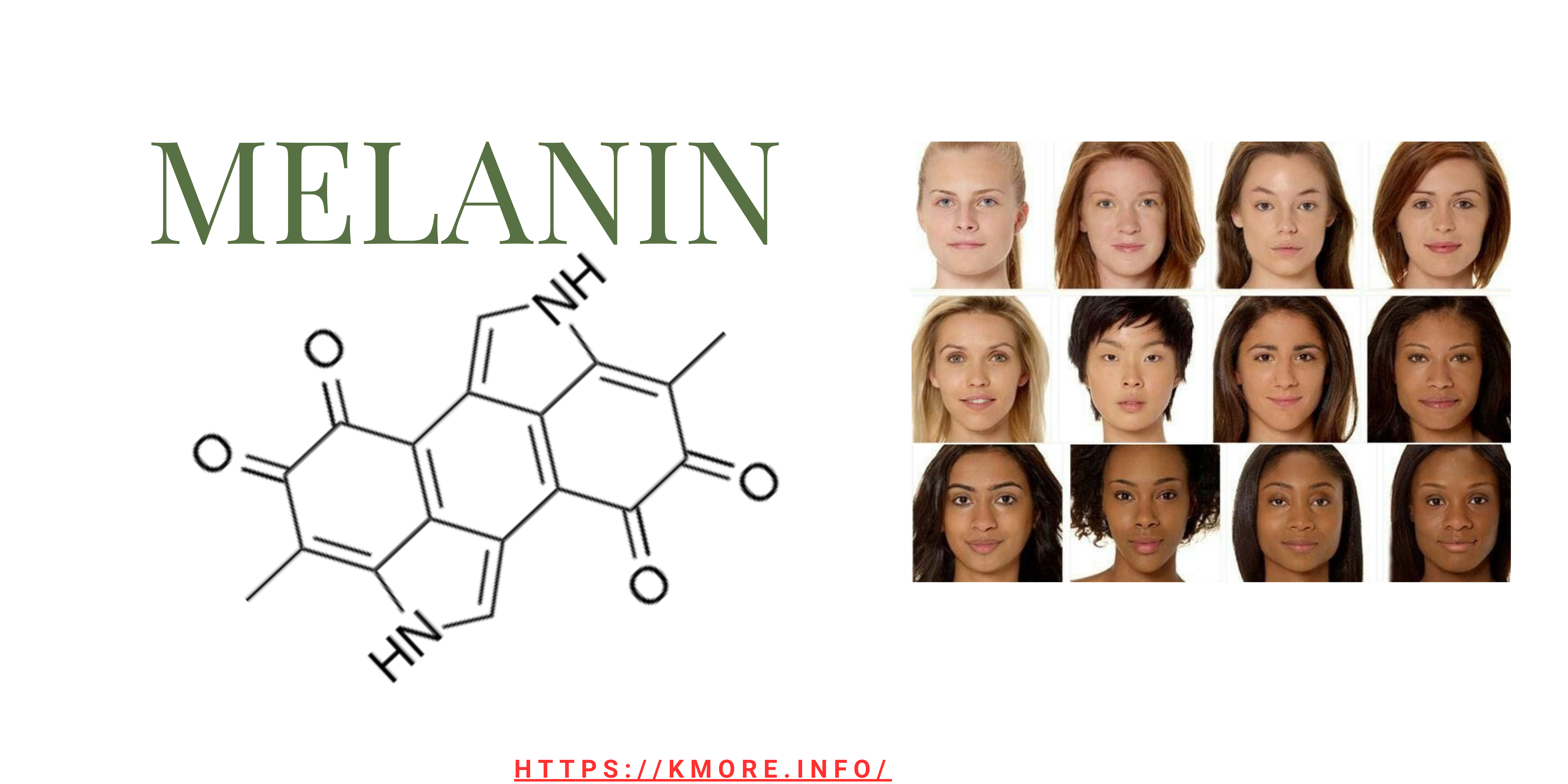What is Melanin?
Melanin, the pigment responsible for the diverse range of human skin and hair colours, is produced by melanocytes, specialized cells in the skin and hair follicles. There are three primary types of melanin: Eumelanin, Pheomelanin, and Neuromelanin. Melanin is stored in melanosomes, organelles within melanocytes’ cytoplasm.

Types of Melanin?
- Eumelanin: It is responsible for the dark colours found in hair, eyes, and skin, and it comprises two variations: brown and black. The distinct combinations of black and brown eumelanin determine the shades of black or brown hair. In contrast, blonde hair results from having a minimal amount of brown eumelanin and the absence of black eumelanin.
- Pheomelanin: They are particularly concentrated in the lips, nipples, and glans of the penis and vagina. Red hair occurs when both pheomelanin and eumelanin are present in equal amounts, whereas pinkish-blonde hair results from brown eumelanin mixed with pheomelanin. Unlike eumelanin, pheomelanin in your skin doesn’t provide sun protection.
- Neuromelanin: It regulates the hues of neurons, the messengers within your body, unrelated to your physical appearance.
Significance of Melanin
- UV Protection: Melanin protects against various forms of ultraviolet (UV) radiation, including blue light, UVA, UVB, and UVC. It absorbs these rays and scatters them in the outer layer of your skin, preventing them from causing harm deeper within your skin.
- Defence from Reactive Oxygen Species (ROS): Melanin offers protection against reactive oxygen species (ROS), which are harmful byproducts of cellular processes. By scavenging for ROS, melanin helps increase antioxidants and remove free radicals, thereby preventing cellular stress, premature ageing, and potential health issues like diabetes and cancer.
Disorders related to Melanin Deficiency?
Melanin deficiency is associated with various skin disorders and health issues, including:
- Vitiligo: This condition results in white patches on the skin due to the destruction of melanocytes by the immune system. It’s more noticeable in individuals with darker skin.
- Albinism: Rare and characterized by very low melanin levels, it leads to pale skin, white hair, blue eyes, and an increased risk of vision loss and sun damage.
- Melasma: People with melasma develop brown or blue-grey patches on their skin, often triggered by hormones, sun exposure, or birth control pills. Treatment options include prescription creams, laser skin resurfacing, or chemical peels.
- Pigment loss after skin damage: In cases of skin infections, burns, or blisters, the body may struggle to replenish melanin in the affected area.
- Hearing loss: Melanin is present in the stria vascularis of the inner ear, making its deficiency linked to an increased risk of hearing problems.
- Parkinson’s disease: While neuromelanin typically increases in the brain with age, individuals with Parkinson’s disease experience a decrease in neuromelanin due to the death of brain cells in the substantia nigra.
FAQs
Melanin chemical formula?
C18H10N2O4
Define Complexion.
An individual’s skin colour is determined by biological characteristics, primarily influenced by a group of natural pigments called melanin.
Melanocytes function?
Melanocytes create melanin through a biological process known as melanogenesis, generating the pigment in the skin, eyes, hair, nasal passages, and inner ear.
How do we increase Melanin?
While numerous products assert to enhance melanin production, there is currently no scientific evidence to substantiate their efficacy. Researchers are actively investigating natural methods to promote melanin production for the prevention of sun damage and skin cancer.
How does skin get Melanin?
The process of melanin production in the skin involves specialized cells known as melanocytes. The quantity of melanin naturally present in your body is regulated by your genes. Additionally, exposure to sunlight prompts the skin to produce increased amounts of melanin.
Are Melanin and Melatonin the same thing?
No, melanin and melatonin are not the same. Despite their similar-sounding names, they have distinct roles. Melanin is a pigment that determines skin tone, while melatonin is a hormone that regulates your sleep-wake cycle.
For more Articles:
Carbondioxide into Formate as fuel – Know More (kmore.info)
Connection Between Chronic Stress and Alzheimer Disease – Know More (kmore.info)
